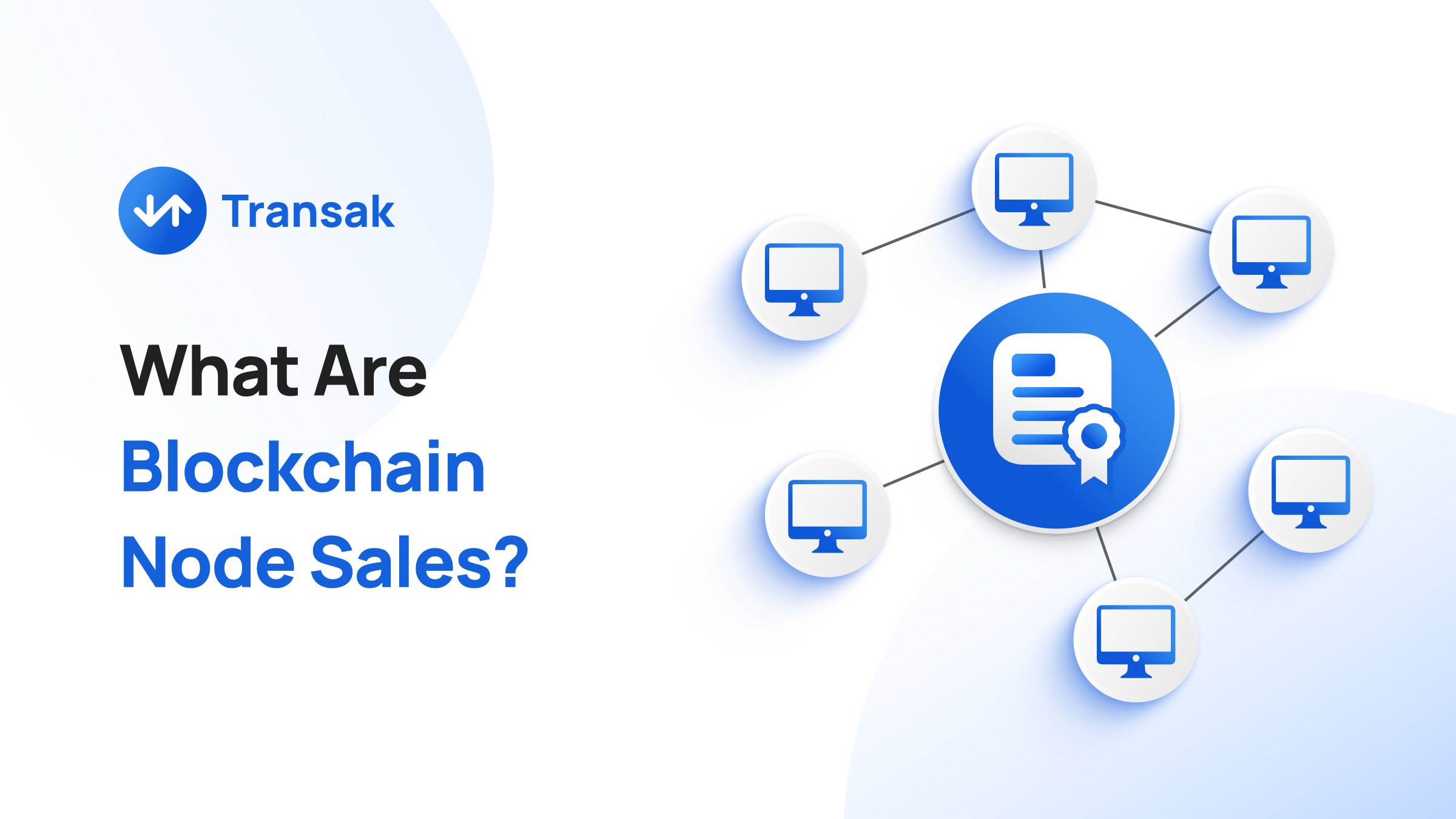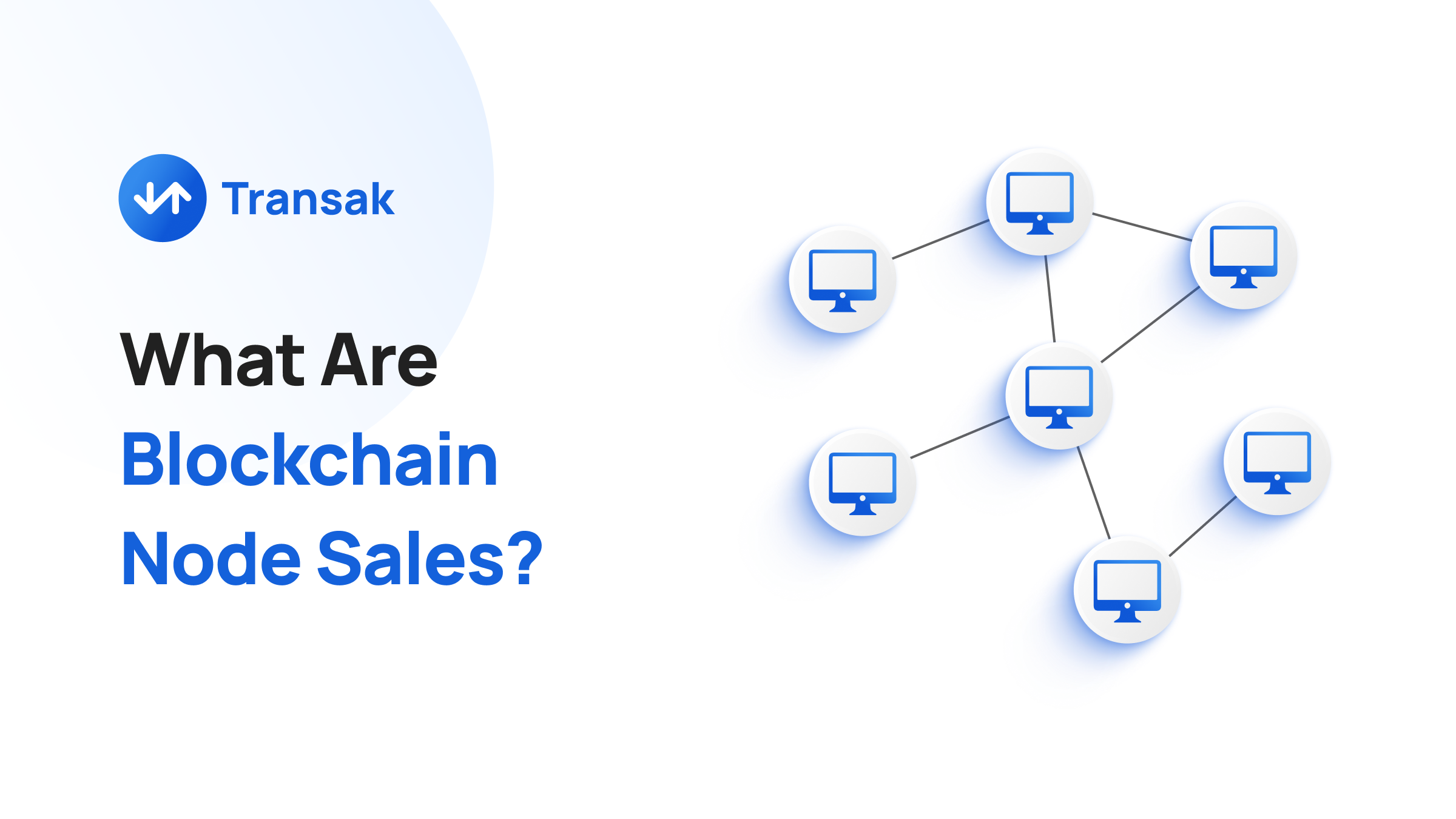
Blockchain node sales are emerging as the next frontier for investment in projects driving decentralization and long-term profitability.
Crypto space has witnessed various forms of fundraising actively starting around 2013, such as crowdfunding, initial coin offering (ICO), security token offering (STO), initial exchange offering (IEO), and more. Blockchain node sales can be considered as the latest addition to this fundraising landscape.
For example, CARV, the largest modular data layer for AI and gaming with a community of over 2.5 million members, launched its initial public node sales in June 2024. The node operators of this project are rewarded with 25% of the total token supply within 4 years.
In this article, we’ll go into the weeds of blockchain node sales, working process, advantages, participants, and more with the help of successful examples.
Understanding Blockchain Node Sales
Blockchain node sales are a fundraising mechanism employed by blockchain projects and crypto startups. In essence, it involves selling the right (or license) to operate a node on a particular blockchain network.
Node operators play a vital role in maintaining the network's security, validating transactions, and participating in consensus mechanisms. Participants purchase node licenses that allow them to operate a node or multiple nodes on particular blockchain networks.
These sales allow node license holders to be a part of new projects at their early stages with the potential for early returns and increased influence on the project's development.
The node licenses are typically provided to the participants in the form of non-fungible tokens (NFTs), with a minimum lock-up period based on the projects’ requirements.
For running a blockchain node, the license holders are offered rewards, typically in the project’s native tokens, along with a portion of transaction fees.
The node operators also receive other benefits like NFTs, exclusive access to governance votes, or participation in future token airdrops.
Who Are The Major Node Sale Participants?
Individual Investors
Retail investors who are willing to reap the benefit from projects that have the potential to grow and develop in the near future are the main buyers in blockchain node sales.
The possibility to generate higher returns if invested in the early stages of node sales has played a crucial role in attracting individual investor participation.
Professional Node Operators
These node operators consist of a single individual or group of individuals with technical skills and system requirements to set up and maintain blockchain nodes.
Here, the individuals or companies can also operate nodes as a service by offering necessary infrastructure along with their expertise to support participants with limited technical knowledge of operating nodes.
Institutions and Enterprises
Institutions and enterprises often consider participating in node sales as a strategic investment. By investing a significant amount, they can acquire a large portion of a project's nodes at a potentially lower price per node.
This investment strategy can provide them with access to the project’s governance policies and potentially higher returns. Owning a substantial number of nodes can also help them strengthen their position within the blockchain ecosystem and enhance their reputation.
How Do Blockchain Node Sales Work?
Sale Announcement and Registration Process
The project announces details associated with the node sales, such as important dates, in-depth sale details, and minimum technical and investment requirements, such that potential buyers can check if the node sale fits their needs and expectations.
Interested buyers willing to participate in the node sales can then complete the registration process as outlined by the project, which will also help in the completion of KYC/AML verifications in case it’s compulsory in their jurisdiction.
Purchase and Transactions
Upon completion of the registration process, the participants can acquire nodes through the supported sales platform while agreeing to the terms and conditions put forward by the project.
The mode of payment and support network to participate in the node sales vary based on the project’s requirements.
For example, Aethir's node sale is conducted on the Arbitrum Network, where users need to pay Wrapped ETH (wETH) for node licenses and ETH for gas fees.
Setup and Deployment
Participants need to download and install the recommended software provided by the project behind the sales to run the purchased node efficiently on the blockchain network.
Projects like Aethir allow its participants to freely download this software for their devices with Windows or Linux from the project’s official website. They also provided detailed tutorials such that even beginners can start running their nodes right after their initial purchase.
Performance Analysis and Access to Tools
Participants can log in to their accounts to monitor and analyze the performance of the purchased nodes. For example, the dashboard provides data on claimable and withdrawable token rewards, along with metrics that represent daily, weekly, monthly, and yearly rewards.
Participants also have access to in-depth details, including the comprehensive status of their node sale licenses, all in one place. Data is presented using line graphs, pie charts, and bar charts, ensuring the information is visually appealing and easy to understand.
Earning Rewards and Community Engagement
Projects allocate a specific token supply to reward their node operators for their valuable contribution to securing and maintaining the stability of the blockchain network. The license holders are rewarded with tokens from the block reward and transaction fees generated within the network.
With the help of engagement with the node operators, feedback is collected to improve future node sales and to build a strong community that fosters collaboration, trust, and long-term growth for the network.
Support and Maintenance
Participants are offered a dedicated technical support team to tackle any glitches or technical challenges they experience while running the blockchain nodes. Established projects also provide online forums that facilitate community discussion, which is helpful in solving most beginner and mid-level issues.
The technical team is also responsible for conducting regular updates, which play a crucial role in the proper functioning of the nodes, thereby offering the best possible user experience for the node operators.
Benefits of Node Sales
Ease of Fundraising
Node sales allow new and existing projects to raise substantial funds in a shorter span with the support of participants from the blockchain space.
The collected funds can be used for development, marketing, community building, and operational expenses.
Network Security and Decentralization
The easier access to buy nodes from the sales increases the distribution among varied participants across the world, which in turn enhances the decentralized nature of the network.
The reduction in the chance for a centralized entity to own and control more than half of the nodes thereby increases the overall security and resilience against attacks.
Long-Term Commitment
The lock-up period, with the possibility of ranging over a few years, innately makes the participants commit to the project for a minimum period, allowing the maintenance of the liquidity of the network.
This commitment also helps the participants to be involved in other initiatives that promote the growth of the project, which has the potential to positively impact the overall ecosystem’s development.
Governance Rights
Node sales that offer governance rights allow the participants to vote for the major decision-making policies related to the project’s growth and development.
The active involvement in project governance empowers investors to actively shape the future of the project, potentially leading to even greater returns and a sense of ownership.
Top Things to Consider Before Node Sale Participation
FOMO is the worst reason that one can have while jumping into node sale participation.
As an informed participant, it’s important to understand and analyze these concepts while considering node sales to avoid investment regret.
Implied Fully-Diluted Valuation (FDV)
FDV is a standard metric that investors use to evaluate the total worth of a blockchain project, considering its full token supply. This metric is helpful for node sale participants to calculate if their investments can reap benefits in the future.
Here’s an example: $10,000 is paid for a newly launched blockchain node and offers you a reward of around 10,000 tokens. In this case, the price of the token must be at least $1 each to be a breakeven investment and at least $1.5 to gain 50% profit.
FDV calculators can be a great tool, assuming the active nature of nodes, to estimate the time it will take for your node sale investments to break even. If an investor finds that a project is not worth the long-term commitment, they can explore other opportunities.
Tokenomics
Tokenomics helps participants understand the percentage of the total token supply that the token sales project allocates as node rewards. This allocation varies according to projects, and this percentage, along with the number of tokens allocated to each blockchain node, can be seen as a crucial factor to consider in node sale participation.
For example, the Sophon Node Sale project introduced the $SOPH token as its network’s native token. According to the $SOPH tokenomics, 20% of the total token supply is allocated as the node rewards.
Reward Structure and Lock-Up Period
Like other factors, the reward structure also varies based on the node sale project’s policies, and projects with bad reward allocation can take a hit on the investment. Fee sharing model is typically followed for node sales, where the fees from network activities like transactions are shared between the node operator and the project.
Node sale projects also put forward a fixed lock-up period for selling the reward tokens, and this duration can range from a few months to years. For example, node operators of the HYCHAIN network need to complete a 3-year vesting period to sell their reward tokens.
It’s best to choose projects that offer a sweet spot when it comes to the reward structure and lock-up period for a better return on the deployed fund.
Examples of Successful Node Sales
Aethir
Aethir is one of the best distributed cloud computing infrastructures for virtualized computing, gaming, and artificial intelligence (AI). They were able to successfully sell blockchain nodes worth around $65 million within its first hour of public sale in March 2024.
As of September 2024, Aethir has over 20,000 node operators with an implied FDV valued at more than $2.1 billion. This project allocates 10% of its total token supply over 4 years, with a potential for 5% additional rewards based on the node’s performance.
Sophon
Sophon is an entertainment-based blockchain platform that allocated 200,000 blockchain nodes for sale in April 2024 and raised over $60 million within the first 10 days. These node sale licenses were distributed to the participants as ERC-721 tokens and were strictly non-transferable for the first year.
The participants can claim the rewards after the initial lock-up period of 3 months. Sophon node sales crossed over 123,000 within 5 months of its initial sale date with more than 5,800 node buyers.
Conclusion
Node sales will emerge as an important fundraising method in the blockchain space that has the potential to incentivize individuals and entities to strengthen the security of blockchain networks and promote greater decentralization and community-driven governance.
These blockchain sales also cater to a long-term commitment between projects and participants, reducing the tendency to quick profit booking and to focus on being a part of a growing project with a sustainable reward system and strong community support.

